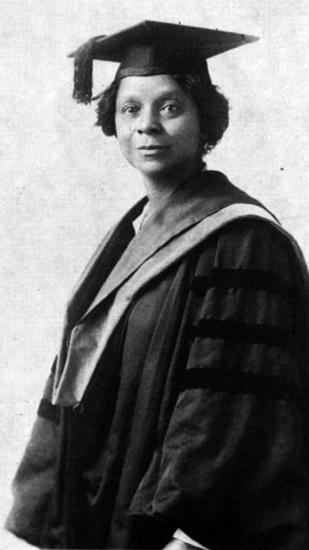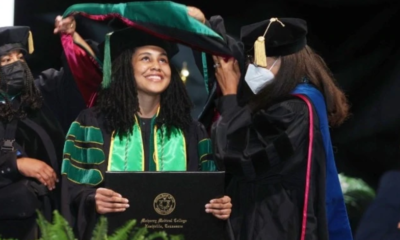Black Women in Education
U. of C. statue gives black scholar her place in history
When Georgiana Rose Simpson arrived to the University of Chicago in 1907, her presence in a dorm caused an uproar among some of the other students because she was black, and she was eventually asked to move off campus.
Undeterred, Simpson continued her studies by commuting to campus and corresponding from afar and went on to become one of the first black women in the country to graduate with a doctorate, records show.
For decades, Simpson’s role as the first black woman to finish a doctorate from U. of C. has gone largely unknown.
But on Tuesday, two university students will unveil a bust of Simpson atop a pedestal at the Reynolds Club, the university’s student center, which was once accessible only by white males. For Asya Akca and Shae Omonijo, the move is an effort to give Simpson her rightful place in university, and Chicago, history.
“The University of Chicago is on the South Side in a predominantly African-American community, and yet there is not that much African-American history represented on our campus,” Omonijo said. “This is despite the fact that so many prominent black scholars came from this institution.
“It’s important to see and know her. … Classes may be hard, you might fail a midterm or not know what to major in. … But at the end of the day, if she pushed through, you can make it and graduate,” Omonijo said.
With the Simpson statue, Akca and Omonijo are entering a larger conversation about the role of monuments and statues in the nation’s history and how the images affect the consciousness and esteem of the people who see them.
Nationally, there are few statues that recognize the historical contributions of women. In Chicago, there are memorials that honor women like Jane Addams — but few statues or busts that present an actual image of a notable woman. According to the Smithsonian Institute’s archives, only about 8 percent of publicly displayed statues depict women.
“Women — real women, not symbolic and allegorical figures — are practically invisible in American memorial culture,” said Erika Doss, a professor of American Studies at the University of Notre Dame and the author of the book “Memorial Mania.”
“Memorials have changed in America in recent decades due to increasing numbers of Americans claiming the public sphere to represent their issues,” she said in an email. “Today, we see a shift from statues of ‘great men’ to memorials dedicated to subjects previously excluded from public art — like the Rosie the Riveter Memorial in Richmond, California, which is dedicated to the female defense industry workers of World War II.”
Rather than pushing for the removal of monuments with a dark history, Omonijo and Akca say they want to work to develop new ones of women and minorities …
Please read original article- U. of C. statue gives black scholar her place in history


























